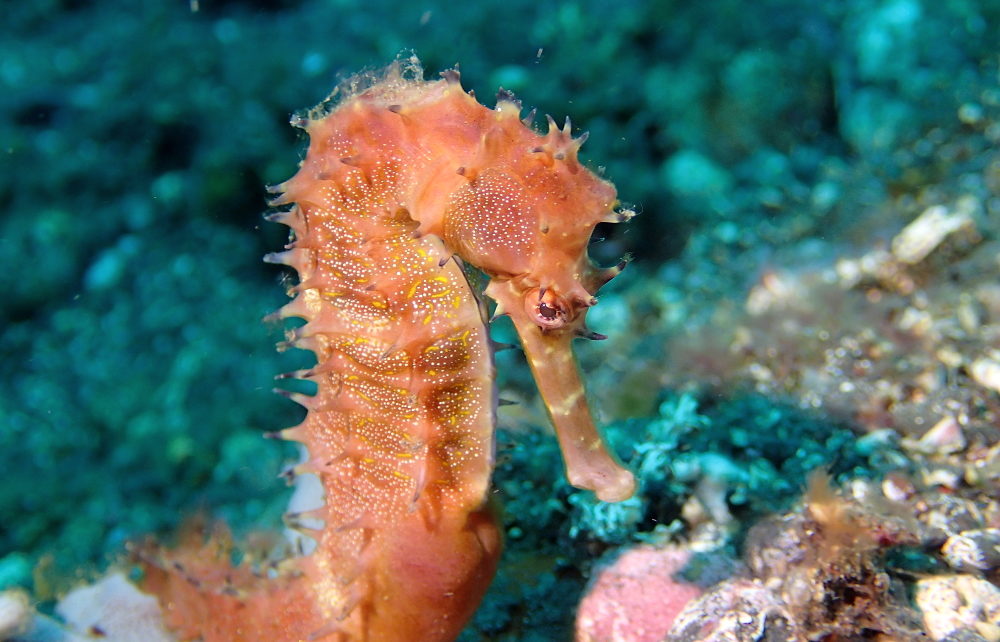Beyond the black sand beaches of Tulamben, on the coast of Bali, tufts of coral and brightly coloured sponges cling to the otherwise sparse volcanic slope. For those taking the time to look, these are the best places for divers to find the weirdest and most wonderful critters. Seahorses are just one of the many unusual creatures that carve out an existence on this unremarkable topography. Here are some more of our favourite finds.
Don't Pick A Fight With A Mantis Shrimp
Peacock Mantis shrimp pack the most powerful punch in the animal kingdom. Their club-like limbs hit with the force of a bullet, striking so fast they produce a flash of light as the water around the claw boils. Mantis shrimp are one of our favourite critters. They usually hide in their burrows so we were very lucky to see this one racing around on the open sand.

Weedy Rhinopias, The Ambush Predator
With highly effective camouflage, Weedy Rhinopias lie in wait for their unsuspecting prey, quick to snap up any creature that will fit inside their unusually large mouths. On the rare occasions they do change position, they tend to walk across the seabed on their fins rather than swimming. Despite their remarkable appearance, Weedy Rhinopias can be surprisingly hard to spot. They blend in well with their surroundings.

USAT Liberty Wreck, Bali's Number One Dive Site
The USAT Liberty served as a cargo vessel in both world wars before being torpedoed in 1942 and subsequently beached at Tulamben. Around 20 years later, tremors from a volcanic eruption pushed the Liberty wreck into the sea where she has become an iconic dive site and thriving reef. Although we saw a lot of other divers on the Liberty wreck, it was still a good place to spot turtles, potato cod and other bigger fish.

Cuttlefish, Masters of Disguise
Cuttlefish can change both their colour and texture, allowing them to hide against any background. They also use colour to communicate. An angry cuttlefish will pulse bright red or purple as it splays its limbs towards the threat. If this display fails, a quick burst of black ink will cover their retreat as they disappear in a jet propelled blur. We took these pictures just a few seconds apart.
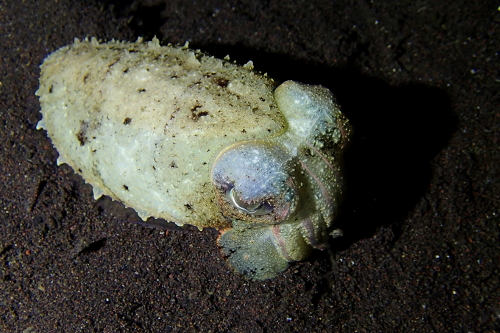
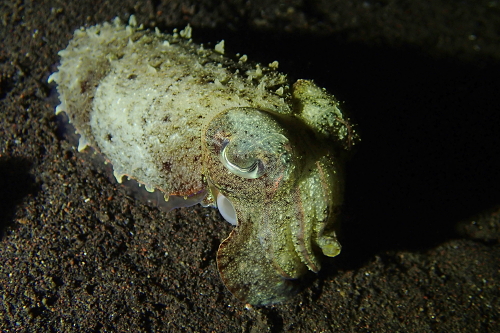
Finding A Cryptic Sponge Shrimp In Tulamben
Cryptic sponge shrimps perfectly match the colour and pattern of their host sponge. It took us a while to find this one.
Can you see the shrimp?
Hint: Look for the eyes and the white spots on its legs and the edge of its body. It's also casting a shadow.

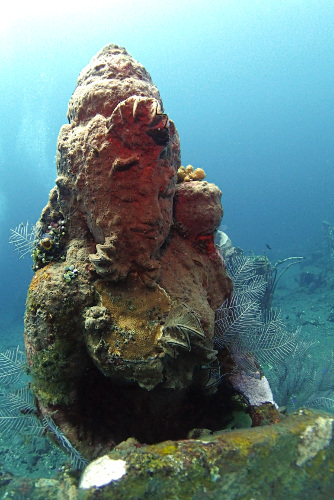
Tulamben's Underwater Temple
A local resort created this underwater temple to add an extra point of interest to their house reef. It's more a collection of statues than an actual temple and you won't see anyone worshipping here. The fern-like hydroids and zig zag clams seem to like it though.
Gobies And Shrimp, A Match Made In Heaven
We saw a lot of these burrows on the black sand slopes in Tulamben. The near-blind snapping shrimp excavates the hole while a sharp-eyed goby stands guard. The shrimp keeps one antennae in contact with the goby at all times, ever alert for the signal to retreat into the safety of their shared burrow. We find these creatures fascinating to watch but it can be difficult to get close without scaring them.

The Hermit Crab's Guide to Home Defence
Venomous harpoons are the hermit crab's weapon of choice when it comes to protecting their mobile homes. These crabs place anemones on their shells so the stinging tentacles will keep predators at bay. This also gives the anemones a mobile platform and access to plenty of food scraps so the arrangement works well for both parties. If you look closely, you'll see this crab has also picked up another hitchhiker.

A Wall of Fish in Tulamben
Oxeye scads stick together in a huge school, patrolling the shallows during the day. At night they go their separate ways to feed. We had great fun swimming through and around these densely packed fish.
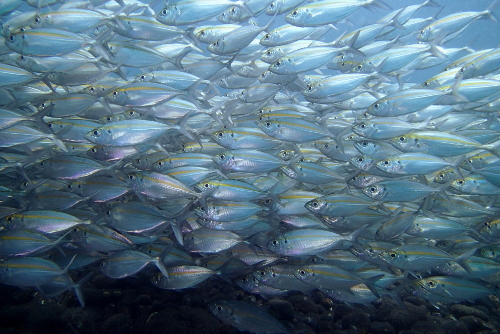
Ribbon Eel - The Transgender Granny
Ribbon eels are all born male, changing colour from black to blue as they reach maturity. Later in life they all change sex, becoming female, and turning yellow in the process. This one is older and presumably part way through its gender reassignment.
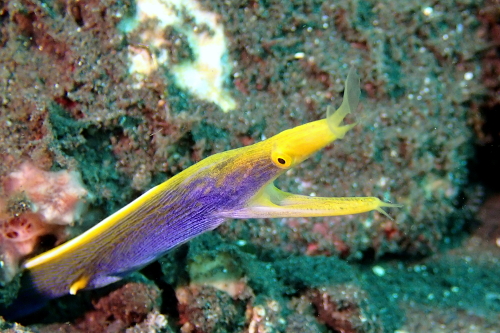
Scuba Diving In Tulamben
Diving in Tulamben is generally fairly shallow (30m or less) with quite easy conditions.
There is a lot of shore diving in Tulamben although some dive centres use a boat for convenience. The boat trips are usually no more than 5-10 minutes so you will come back to shore between dives.
Tulamben is well known for its critter diving. Swim very slowly to give yourself the best chance of spotting some of these elusive creatures.
Many thanks to Scuba Seraya Resort for their kind hospitality. We loved waking up to views of sunrise over the ocean. We also had some of our best critter encounters while diving on Seraya Secrets, their house reef.
